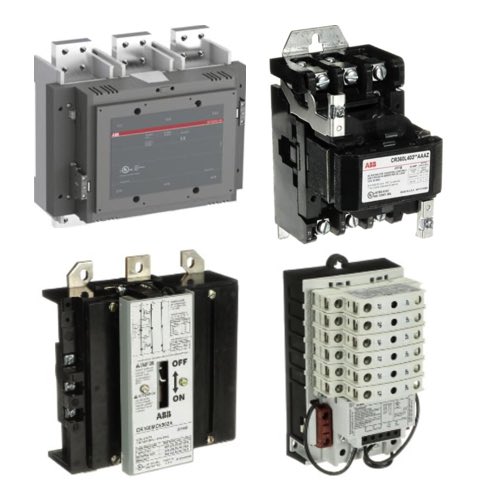ABB Starter Contactors

RSP Supply carries a full range of ABB starter contactors engineered for dependable performance, efficient motor control, and safe operation across industrial applications.
Designed with ABB AF technology, these contactors minimize coil power consumption, reduce heat, and ensure consistent switching - even in systems with unstable voltage or power fluctuations.
Compact yet powerful, ABB contactors integrate easily into control panels, automation systems, and machinery, offering flexibility and reliability for pumps, conveyors, fans, and manufacturing equipment. ABB starter contactors are built to withstand demanding environments, they deliver smooth motor starting, long service life, and maximum uptime.
FAQs
What is an ABB starter contactor?
An ABB starter contactor is an electrically controlled switch used to safely start and stop motors, ensuring reliable power delivery and protection against overloads.
What application is an ABB reversing starter contactor used for?
A reversing starter contactor is used when a motor needs to change direction, such as in conveyors, material handling systems, and industrial machinery.
What is AF technology in ABB contactors?
ABB’s AF technology automatically adjusts to voltage fluctuations, eliminating contact chatter and reducing energy use for more stable and efficient performance.
Where are ABB contactors commonly used?
ABB contactors are used in pumps, fans, conveyors, compressors, and automated control systems across manufacturing, mining, and water treatment industries.
What are the advantages of ABB contactors?
They’re compact, reliable, energy-efficient, and designed for consistent operation even in environments with unstable power supply or high load demands.
Motor Control Basics
Motor control provides the means to safely operate electrical motors across industrial and commercial systems. Modern motor control circuits include three key components:
- A circuit breaker to protect against overloads
- A contactor for switching power remotely
- An overload relay to detect excessive current and shut down the circuit
These components work together to ensure safe, remote motor operation, preventing dangerous inrush currents and mechanical wear that were common in older, manual systems.
Motor Starters, Soft Starters, and VFDs
Modern motor control systems often include motor starters, soft starters, or variable frequency drives (VFDs) depending on application needs:
- Motor Starters – Simple, cost-effective solutions for turning motors on/off with overload protection.
- Soft Starters – Provide smoother motor acceleration and reduce inrush current for longer equipment life.
- VFDs – Offer full-speed and torque control throughout operation, with energy-saving capabilities.

